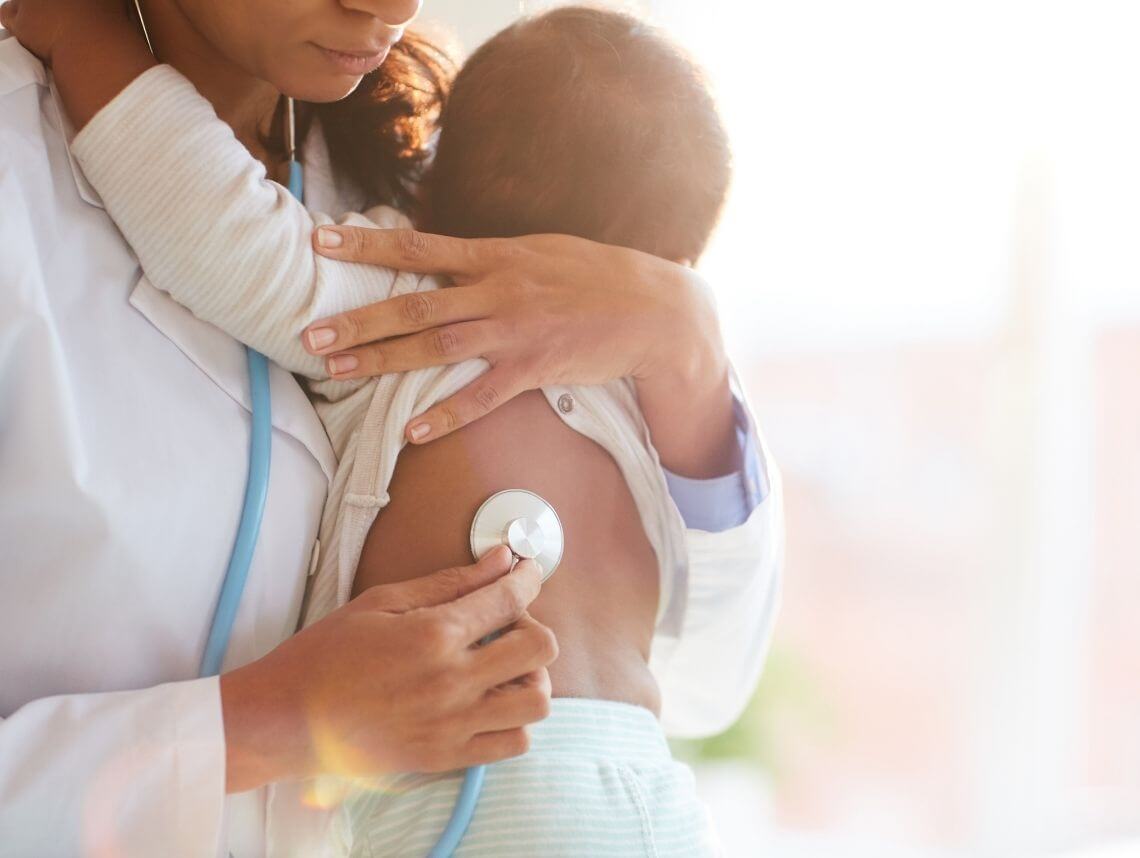While the typical timeline for a baby to be born is around nine months, some children are born early — or prematurely. Some premature babies are born perfectly healthy, but others may have some issues at birth. That’s because being born prematurely can restrict their ability to fully develop in the womb. This is what happens when a baby is born with respiratory distress syndrome. How does this condition impact your child’s quality of life? And what can you do to help them?
What is respiratory distress syndrome?
Respiratory distress syndrome (RDS) is a condition that occurs when a baby doesn’t have enough surfactant in its lungs. Surfactant is a liquid that coats tiny air sacs in the lungs and helps to keep the lungs from collapsing. These air sacs allow oxygen to enter the blood from the lungs and release carbon dioxide from the blood into the lungs. If these air sacs aren’t open, they can’t function properly — leading to breathing problems in the infant.
Surfactant is developed in the lungs around 26 weeks. With time, the lungs make more surfactants. But in premature babies whose lungs are not fully developed, their lungs haven’t had the time needed to make this liquid. This makes it more likely that they’ll need extra oxygen and help with breathing.
Symptoms of Respiratory Distress Syndrome
The medical team who delivers your baby will likely notice if your child has any breathing problems. But, sometimes symptoms develop shortly after. Signs that your infant may have RDS include:
- Fast breathing very soon after birth
- Grunting sound with each breath
- Changes in the color of their lips, fingers, and toes
- Flaring of the nostrils with each breath
- Chest retractions
- Insufficient urine production
- Low birth weight
Treatment Options
If your child has RDS, then first and foremost, they will need oxygen. Oxygen can be provided in several ways:
- A small tube with prongs is placed in the nostrils
- CPAP (Continuous Positive Airway Pressure) machine gently pushes air or oxygen into the lungs to keep the air sacs open
- Ventilator
- Oxygen therapy
Once your child has sufficient oxygen, then other treatments will be administered. Surfactants can be administered into the baby’s lungs to replace what they don’t have. This is done by using a breathing tube placed in their windpipe. But, other options include IV treatments. A very small catheter is placed into one or two of the blood vessels in the umbilical cord. This can be used to get your child the IV nutrition and medicines it needs — including antibiotics or mild sedatives. An IV can also be used to take blood samples.
How to Care for a Child with RDS
The road to recovery is different for each infant. And it’s likely your child’s RDS will get worse before it gets better. But if you follow the treatment plan set by your doctor, then your child has a good chance of living a long and healthy life. As your baby is able to breathe better, they may need less assisted oxygen and may even be able to graduate from a ventilator or CPAP machine.
To ensure your child is on the road to recovery, you’ll need to attend follow-up appointments with their pediatrician. You’ll also need to understand which medications they need and when they need them so that you can administer them properly.
Caring for a child with RDS may involve monitoring them while they sleep to ensure they’re getting the oxygen they need to breathe. Don’t be afraid to ask for help. You can reach out to a supportive family member or call a home health care company. This can ensure someone is watching your child while you run errands, sleep, or care for any other children in the home.
Contact Sonas for Home Health Care in Florida
It can be hard to balance your time between work, home, and caring for a child. That’s why our team of skilled professionals at Sonas Home Health Care is here to help.
Our home health care services offer support in the comfort of your home. We refer loving and competent nurses to provide customized care for families — from a few hours a day to around-the-clock supervision. Contact us directly to speak with a home health care professional or request a free in-home assessment. Together we can determine the best plan of action to keep your loved ones happy and healthy.
If you or a loved one are considering Pediatric Home Health Care services in Florida, contact the caring staff at Sonas Home Health Care. Call today at (888) 592-5855.
This blog was reviewed by Jillian Miller BSN, RN — Director of Nursing for Sonas Home Health Care’s Tampa Bay market — for clinical accuracy. Jillian Miller has been a nurse for 16 years — working primarily in pediatrics. She believes the best part of working with the pediatric population is when you see smiles from clients when you first enter the room. She loves seeing the difference you can make in families’ lives while providing the best care possible for them.

